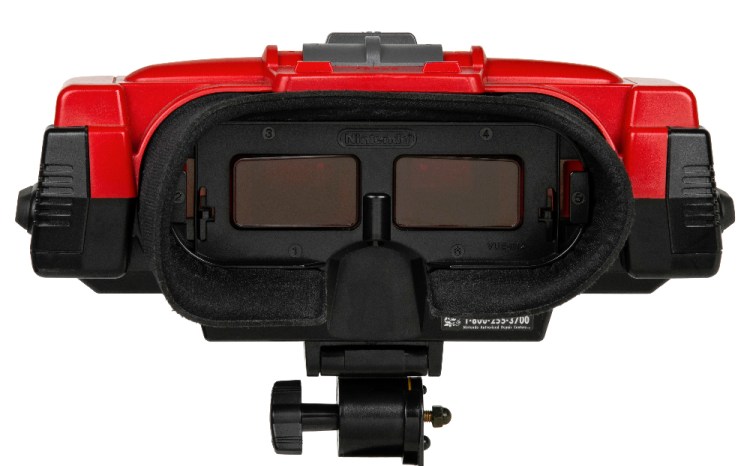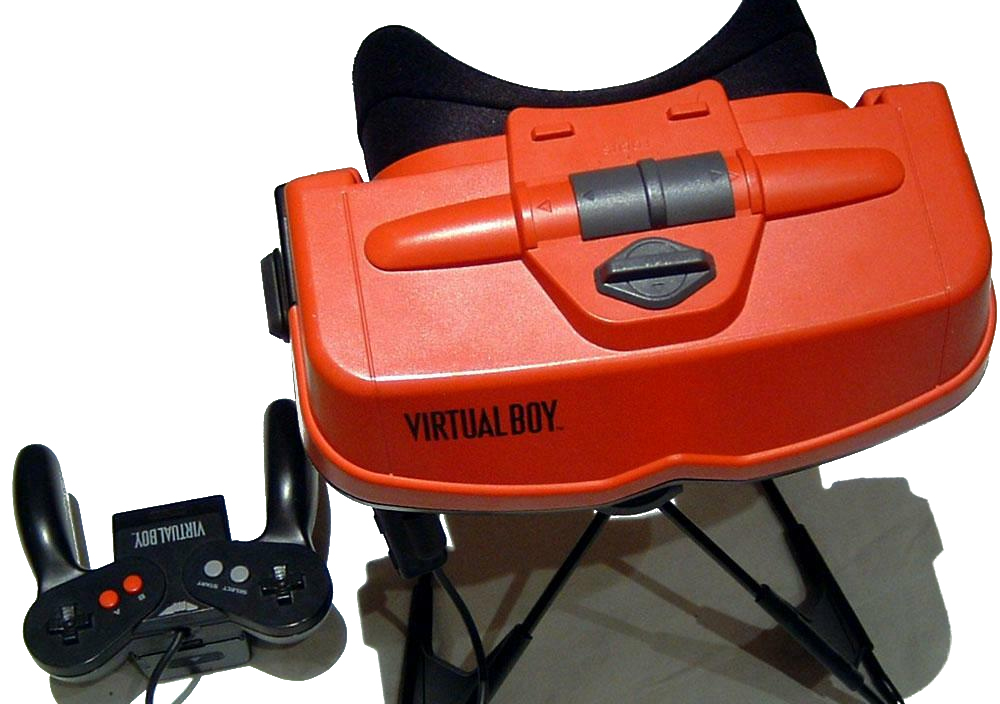Let’s keep looking at notable flops from the gaming industry’s past, including two from a company that’s had its fair share of successes.
I won’t spoil who I’m talking about, but it’s Nintendo.
Virtual Boy
Released: Aug. 14, 1995
What was it? The Virtual Boy was a portable system from Nintendo that enabled players to see games in 3D.
How did it do? The Virtual Boy sold 770,000 devices according to a 2007 story from GamePro. For comparison, the Nintendo DS, a later handheld system, sold 158 million. Nintendo discontinued the Virtual Boy less than a year after its debut.
Why did it flop? The Virtual Boy was an awkward system. Despite being portable, you had to shove your face into the system while it held itself up on a short, wobbly stand. People also complained that using the system hurt their eyes. The graphics were also an issue, since the Virtual Boy only displayed games in red and black.
Its legacy: Nintendo would eventually release a successful 3D portable, the 3DS. Unlike the Virtual Boy, you could see the 3D effect just by looking at a screen.
Sega CD
Released: Oct. 15, 1992
What was it? The Sega CD was a hardware add-on for the Sega Genesis that played games off of CDs, one of the first console to do so.
How did it do?: The Sega CD sold 2.7 million devices worldwide according to the March 1995 issue of Screen Digest, compared to about 40 million Genesis consoles sold. Sega discontinued it in 1996.
Why did it flop?: First off, it cost an expensive $300. Keep in mind that the Sega Genesis was $190 at launch. And the Sega CD wasn’t even a new system; it was an add-on. Also, the Sega CD was only out for a couple of years when the Japanese company began working on a true successor to the Genesis, the Sega Saturn (which was a flop in its own right).
Its legacy: Unfortunately, the Sega CD was the first in a series of blunders for the company. Another Genesis add-on, the 32X, came out in 1994 and also failed. Sega’s next two systems, 1995’s Saturn and 1999’s Dreamcast, also couldn’t find audiences. Today, Sega makes third-party games and is out of the hardware business.
Nintendo e-Reader
Release: Sep. 2002
What was it? The e-Reader was a peripheral for the Game Boy Advance that could read data off of cards. This unlocked items and levels in existing games or played entire games (like classics for the Nintendo Entertainment System) straight from the device.
How did it do? Although it’s hard to find sales data for the e-Reader, Nintendo discontinued it just two years after its launch.
Why did it flop? The e-Reader was a neat experiment, but it ultimately never caught on. Scanning cards could also be cumbersome. Sometimes you needed two Game Boy Advances and a link cable to unlock levels for games like Super Mario Advance 4: Super Mario Bros. 3. Also, while it was cool to download full NES classics, you usually needed to scan multiple cards before you could.
Its legacy: Nintendo would later find a better way to capitalize on its library of classic games with the Virtual Console concept, digital stores that sell old Nintendo titles and download them to the Wii, Wii U, or 3DS.
VentureBeat's mission is to be a digital town square for technical decision-makers to gain knowledge about transformative enterprise technology and transact. Learn More




